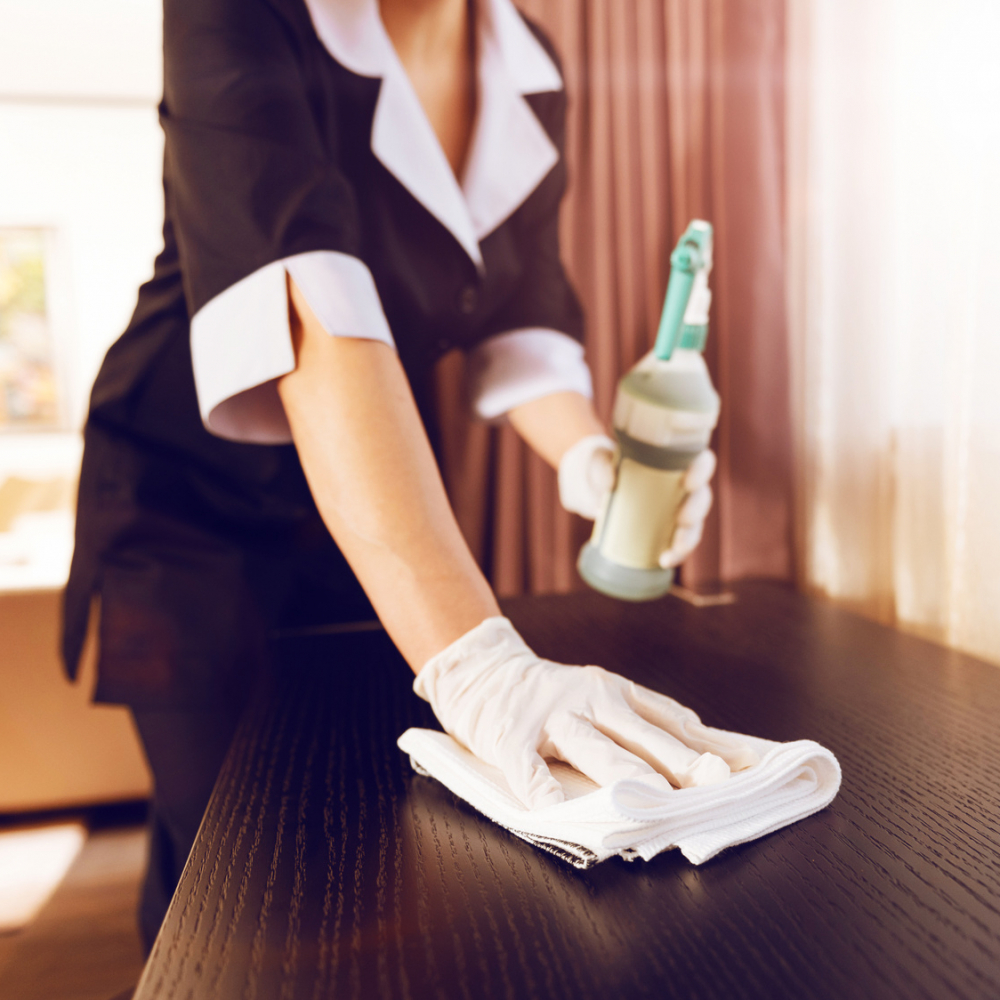INSPIRATIONS

Furniture cleaning guide
Prolong the life of your wooden furniture and avoid damage using our guide.
Natural wood is beautiful and versatile, with styles that range from cosy and rustic to stately, and everything in between. The variety of available wood finishes can make looking after it confusing, so we have prepared this guide to help you with cleaning and maintenance. You will also be able to deal with emergencies, to avoid permanent damage and keep you wood beautiful for longer.
Prevention is better than cure: do’s and don’ts
Know what your surfaces can cope with, so you don’t have to look for fixes.
Particular dangers to look out for include moisture and heat, as most wood finishes don’t cope well with heat. Even a coffee mug can create an unsightly ring, so it’s best to use coasters and mats on everything but the most resistant finishes (the latter include polyurethane, other varnishes and some modern lacquers, which cope better with water and heat). Coloured liquids like red wine and coffee can stain untreated wood most easily.
If in doubt, have coasters or mats readily available, so glasses or crockery are not placed directly on the wooden surface. This way you will avoid ring marks and burns caused by heat, as well as scratches. Use felt or baize backed mats and coasters on easily scratched finishes.
When it comes to vigorous cleaning, less is definitely more: waxing or polishing should be done infrequently, with dusting and gentle buffing in between.
Try to dust with the grain, and on more intricate parts such as handles or carvings, use a soft brush.
Avoid spray polish in general, as it’s hard to regulate the amount applied, and never use silicone spray on traditionally finished wood.
Clean correctly
Unfinished wood
Dry dust with a cloth, microfibre duster or a soft brush. Remove stains with a rubber eraser. Heavy staining can be removed using small amount of white spirit on a cloth. Avoid water, heavy scrubbing and abrasives. With the most resistant stains, careful sanding with a fine-grit sandpaper can do the trick.
Polyurethane finish
The most resistant of all wood finishes, polyurethane (whether gloss or satin) is resistant to moisture and moderate heat and can be cleaned with a damp cloth and mild soap.
Do not use heavy oil or wax based polish on polyurethane finished wood, as it can build up and might require removal with mineral solvent.
Painted items
Dust regularly with a damp cloth. Remove heavy staining stains with warm water and mild detergent solution, dry thoroughly after cleaning. Avoid using waxes or furniture polish.
Chips can be sometimes re-touched but might look patchy and the whole item might need repainting.
Lacquered items
Dust regularly with a barely damp cloth, avoiding over-wetting the wood (it’s best to spray a little water onto your duster). Wipe dry and buff with soft cloth. Use a damp cloth with small amount of mild soap or a bit of furniture polish to remove greasy and sticky marks. Rejuvenate with a good-quality furniture polish couple of times a year.
French-polished items
Dust regularly with a soft, dry cloth. Use a damp cloth with small amount of mild soap or a bit of furniture polish to remove greasy or sticky marks. Dry well with a soft cloth. Few times a year: rejuvenate using a small quantity of a good wax furniture polish. Leave fixing scratches to a professional French polisher.
Waxed items
Regularly dust with a soft, dry cloth. Use a damp cloth with small amount of mild soap to remove greasy or sticky marks. Dry well with a soft cloth. Few times a year, bring back the shine with a good quality wax furniture polish. This will also maintain water-resistance.
Quick emergency fixes
White Rings
To remove a ring, place a thick cloth (e.g. a towel) on top and press with a warm, dry iron for five to 10 seconds, softening the finish enough to release the moisture.
Another remedy consists of mixing boiled linseed oil (available from DIY shops) and turpentine in 1:1 proportion and rubbing it into the stain.
Dents
Apply warm iron as above, but over a damp cloth. Don’t use this fix on delicate, or valuable antique furniture.
Wax and crayon stains
Wax crayon and candle stains can be tackled using ice: fill a plastic bag with ice cubes, wrap in a towel and apply to the stain to harden it. Then scrape the wax gently with a thin but not sharp piece of plastic, such as a credit card.
Shallow scratches
Gently dab with shoe polish in similar colour, then buff with furniture polish. Furniture wax will also fill small scratches, but you might need to wax the whole item to keep the colour even.
